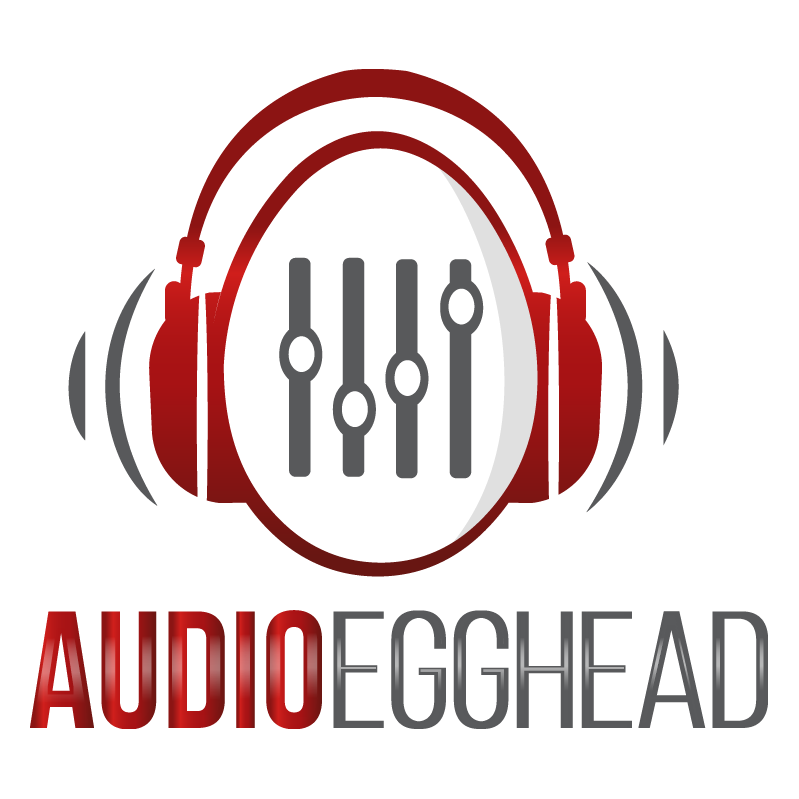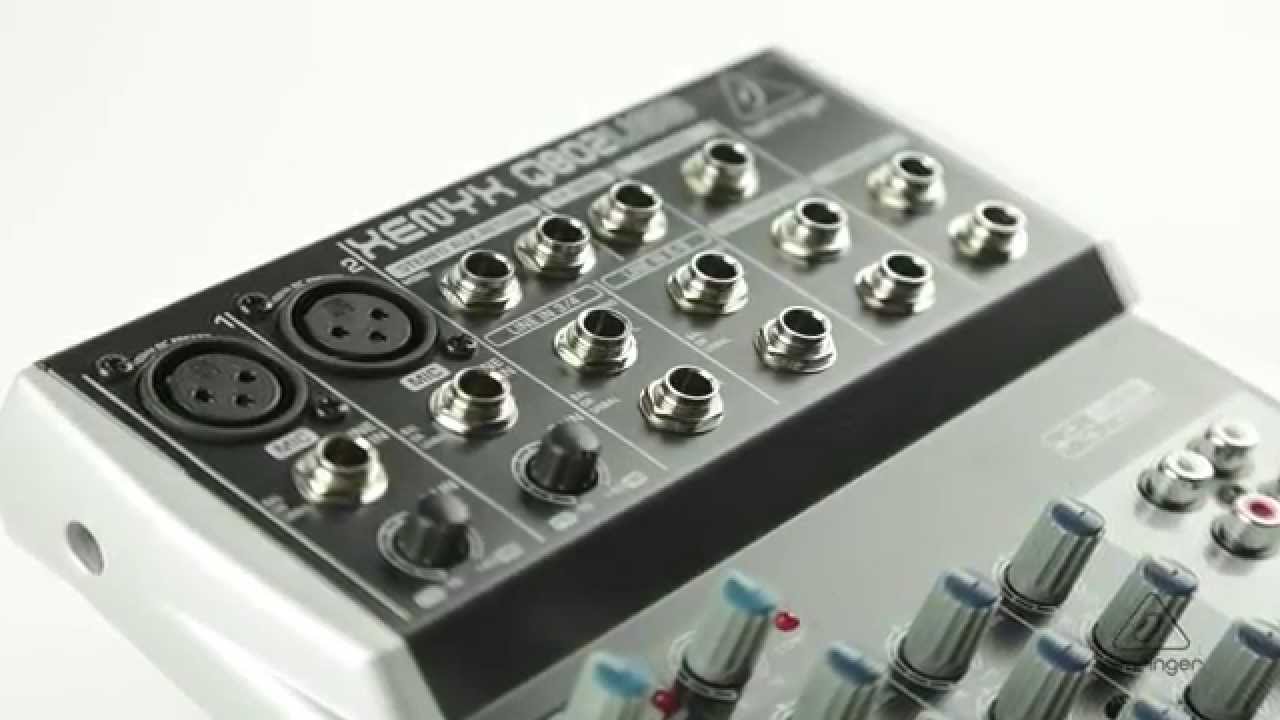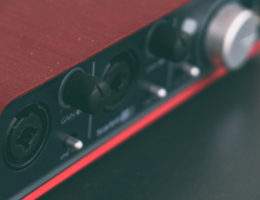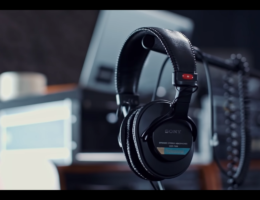If you’re a podcaster or recording artist/producer who is serious about sound, then it may be worth upgrading to a multiple-input mixer. Though many DIY podcast producers create an impressive product with little more than a mic and computer, a mixer can open a new world of recording flexibility in your home recording studio, and bring yourself one step closer to professional-quality recordings. Whether you want to bring in multiple guests with dedicated mics, record live music with the podcast, or even use a mic to capture ambient sound in your recording space, a mixer like the Behringer XENYX Q802USB mixer could be the ticket to sound quality.
These days there are tons of powerful and affordable mixers available to podcasters. With such a wide range of brands and features, however, it can be hard to know which mixers are worthy of your hard-earned gear budget. In this article, we’ll take a close look at the high-quality Behringer XENYX Q802USB and several of the other leading analog mixers in the same class. We’ve broken down product specs for each and price differences, ease of use, design quality, and warranty info. We’ve even offered a few pros and cons for each so you can have a quick reference on hand.
Whether you’re an aspiring podcaster or a pro, the right gear can be critical for success. You may have the most compelling content in your field, but if your production quality lags, your audience probably will too. So if you’re looking to step up your podcasting gear game, it’s worth considering a XENYX mixer like the Behringer XENYX Q802USB or one of its peers from another brand.
What Is the Behringer XENYX Q802USB?
The Behringer XENYX Q802USB is a premium quality little mixer.
It is a USB interface, so it plugs into your computer with a USB cable. In simple terms, this is a unit that will accept multiple microphones or other audio sources like instruments and allow a user to blend those musical sounds together into one mix.
The unit offers a range of advanced mixing functions like frequency equalization and reverb effects and options to route the main signal output several ways. This means you could send the overall mix to a set of headphones, to speakers for an audience, to speakers for monitoring, or all of the above.
A unit like the Behringer XENYX Q802USB has studio-grade built-in compressors, and can give significantly more control over the mix when compared with a USB mic alone—and it’s reasonably priced for the flexibility offered. If you’re getting serious about your podcast, but you’re tired of relying on one mic and passing it amongst your guests, then it may be time to consider a small quality mixer like the Behringer XENYX Q802USB.
The Behringer XENYX Q802USB Specs
The Behringer XENYX Q802USB packs a lot of power into a small frame and a modest price tag. It comes with a power switch and power supply
Four Channels, Eight Inputs, and Lots of Options
It has eight total inputs across four channels, with the first two channels offering XLR mic inputs or unbalanced 1/4″ inputs. These two inputs feature Behringer’s XENYX mic preamps.
Boutique preamps, these XENYX preamps pack an impressive 130dB of dynamic range and a bandwidth between 10Hz and 200kHz. The second two separate stereo input .channels offer 1/4″ inputs, and while they could technically be separated into a left and right channel, these channels will share a volume fader.
Each of the four channels has a dedicated equalizer section with high, mid, and low bands, or 3-band British eq, (3 band eq’s,) and channels one and two offer onboard compression too. This could be a nice feature when using a condenser mic, especially if you have one podcast guest that speaks louder than others.
If you’re a new podcaster, keep in mind that many condenser mics require an external power source to work, also ominously known as “phantom power.” To get your fancy condenser mic up and running, simply tap the red button on the right of the mix until you see the red 48v led illuminate. Then you’re good to go.
Plug-and-Play
The Behringer XENYX Q802USB comes ready to play with most computers via a simple USB connection. Behringer has paired the unit with a copy of their free audio recording Tracktion software, and there is downloadable editing software available at Behringer.com to help you immediately integrate the mixer into your podcasting rig.
Tracktion offers an easy single-screen digital audio workstation (DAW) feel, with advanced features including dynamic automation on tracks, unlimited track count, MIDI compatibility, and support for VST and AU effect plug-ins.
You’ll receive an authorization key for a full version of the podcasting software once you have registered the mixer. It has two ports to plug in condenser microphones. It has several main mix outputs or stereo channels as well.
Add Your Own FX
Besides the one-knob compression channel, the Behringer XENYX Q802USB also offers an effects loop to blend in your favorite delays, fader FX, modulations, and distortions.
If you truly want to experiment with sounds on your podcast, try adding instrumental sounds, such as guitar effects pedals, to the FX Send output on the mixer and gradually increase the FX knob on each channel. This can bring in anything from a simple touch of reverb to truly out-there sound creations.
Price Range of All the Options in This Article
Prices on mixers in this class can vary drastically depending on the number of inputs, the number of channels, brand, and features like onboard effects and routing. For this review, we focused on mixers that range between $90 and $300.
How The Behringer XENYX Q802USB Compares to its Competition
We picked a few similar products available on the market to see how they compare.
But First… More on the Behringer XENYX Q802USB Review
Ease of Use – 3 Stars
This mixer offers a lot of versatility without many frills. One or two reads through the instruction manual, and you’ll be up and running.
Features – 3 Stars
While there are other mixers out there with more bells and whistles, this is a great first mixer without too much going on to overwhelm a podcaster.
Design Quality – 4 Stars
Behringer offers a simple and straight-ahead user experience with this mixer. It may not be totally self-explanatory, but it’s not far off.
Warranty – 4 Stars
Behringer covers this mixer with a one-year limited warranty against defects.
Pros
- Solid and compact design
- Good quality mic preamps
- Onboard compression for two mono channels
- 2-track inputs
- Neo-classic British-inspired EQ sections
- Low noise
- Ok for use in a with mixing desks in a separate control room
Cons
- Eight inputs, but only four channels
- Some have complained that the mixer will wobble on flat surfaces, which could cause issues during live gigs
- One other issue is that recording live Skype calls will require an RCA cable to plug into the headphone jack of the computer, and the RCA end into the Mixer in order to monitor voices on both ends.
- Post fader has been described as annoying
Price $
Yamaha MG10XU 10-Input Stereo Mixer with Effects
 Yamaha’s MG10XU 10-input mixer takes the power and small footprint of the Behringer and kicks it up a notch. With two extra inputs and three extra channels, this mixer will offer lots of power and flexibility for podcasters who want to bring in large groups of people or record large musical ensemble or electric guitars or a whole rock and roll band.
Yamaha’s MG10XU 10-input mixer takes the power and small footprint of the Behringer and kicks it up a notch. With two extra inputs and three extra channels, this mixer will offer lots of power and flexibility for podcasters who want to bring in large groups of people or record large musical ensemble or electric guitars or a whole rock and roll band.
The first four channels on this mixer offer XLR inputs, and it comes equipped with a big selection of onboard effects. These effects are mostly music-focused and include a range of reverbs and delay effects. While these may not make it into your next gardening podcast, they could be nice to have in an unexpected moment of rocking out.
Besides the onboard effects, this mixer also has some slightly more powerful preamps. Yamaha’s proprietary D-Pre preamps make use of a special circuitry (called a Darlington circuit for you nerds out there) that offers lower electrical impedance and more power overall. Again, you may not need gobs of power for a detailed discussion about yoga, but if you need it, you’ll glad it’s there.
The best part of this mixer is that, because of its USB connection, it also works as an Audio Interface with multiple inputs.
Ease of Use – 4 Stars
This mixer is easy to manage, especially for all the bells and whistles.
Features – 5 Stars
With onboard effects and fancy preamps, it’s hard to find a higher quality small mixer in this price range.
Design Quality – 4 Stars
Yamaha has packed a lot into this mixer, but it’s got a pleasant aesthetic that’s not too overwhelming.
Warranty – 4 Stars
Yamaha covers this mixer for one year from the time of purchase.
Pros
- Excellent quality mic preamps
- Doubles as an audio interface
- 10 channels, four of which have XLR inputs
- Onboard effects
- Relatively simple and easy to use
Cons
- More expensive than some competing mixers
- Could be more features than a podcaster needs
Price $
Alesis MultiMix 8 USB FX

The MultiMix 8 USB FX mixer from Alesis offers solid performance and straightforward user experience for podcasters who want the power of onboard effects in an affordable package. This mixer offers 8 inputs spread across six channels and includes a powerful EQ section on the first two channels that you won’t find on the other mixers in our review.
They’ve added a detailed control for the midsection of the frequency spectrum to help dial in the optimal sound. You may think added mid-EQ controls sound like overkill, but they could help notch out weird frequency if you’re planning to record in a space without acoustic treatments.
Besides the bolstered EQ, Alesis offers onboard digital effects with this unit, including a mix of delays and reverbs. Like the Yamaha, these effects may or may not be useful for a podcaster. With that said, this is a light and compact unit, and having the added effects won’t mean a lot of extra weight when you’re moving the unit around for mobile recording.
Price $
Ease of Use – 4 Stars
Alesis has packed a lot of audio flexibility into this easy-to-use package.
Features – 5 Stars
With an improved EQ circuit and powerful onboard effects, this unit offers a lot of bang for the buck.
Design Quality – 4 Stars
This mixer has a simple and manageable look that will appeal to both experts and newbies.
Warranty – 4 Stars
Alesis covers this mixer with a limited two-year warranty.
Pros
- More detailed EQ controls than some competing units
- Doubles as an audio interface
- Powerful onboard effects
- Simple and easy to use interface
- CubaseLE software included
Cons
- Mic preamps may be lower quality than on other mixers
Price $
Mackie PROFX10V3 10 Channel Professional Effects Mixer with USB Bundle with Audio-Technica ATH-M20X

Mackie’s PROFX8V3 mixer is a larger mixer than some others in this review, but it’s also more powerful. This unit features eight inputs with dedicated XLR inputs on the first four channels. Unlike some competitors, however, those inputs also have the option of using a stereo input on those channels.
The EQ section is what really sets this mixer apart. While each channel has its own parametric EQ knobs, this unit also has a stereo graphic EQ, which can help polish the sound for the entire board. This means that you can not only dial in the sound for each individual channel, but you can then also tweak the EQ for your overall mix as well.
This board doesn’t stop there, however, as it also includes a Mackie’s ReadyFX onboard effects bank. Like the Yamaha and Alesis mixers, these are all digital effects like delay, reverb, and chorus. Another nice feature of this mixer is an AUX section for creating a monitor mix with different levels of each input. This could be especially helpful when using a monitor speaker in situations like a podcast taping.
Price $$
Ease of Use – 3 Stars
This unit has a lot of powerful features, but that could confuse some users.
Features – 5 Stars
Mackie has packed a ton of features into this board.
Design Quality – 3 Stars
While it’s powerful, it looks a bit like an alien spacecraft.
Warranty – 5 Stars
This unit is covered with a three-year limited warranty.
Pros
- Includes Audio-Technica headphones
- Tons of features
- Excellent EQ section
- Capable of running a monitor mix
Cons
- Large and may be too complicated for some users
Price $
Our Verdict
 Our overall top pick from this review is the Alesis MultiMix 8 USB FX. This mixer doubles as an audio interface with multiple channels, and offers a great balance of powerful features and simple to use package that could be a great choice for podcasters. It may have features that are geared more towards musicians, but you may just be happy to have those features as your podcast grows.
Our overall top pick from this review is the Alesis MultiMix 8 USB FX. This mixer doubles as an audio interface with multiple channels, and offers a great balance of powerful features and simple to use package that could be a great choice for podcasters. It may have features that are geared more towards musicians, but you may just be happy to have those features as your podcast grows.
Though we’d give the Behringer XENYX Q802USB a solid B+ for this review, we like the MG10XU for its focus on audio quality and simplicity. If you’re looking for a great sounding mixer with plenty of room to grow, either of these options is worth a close look.





